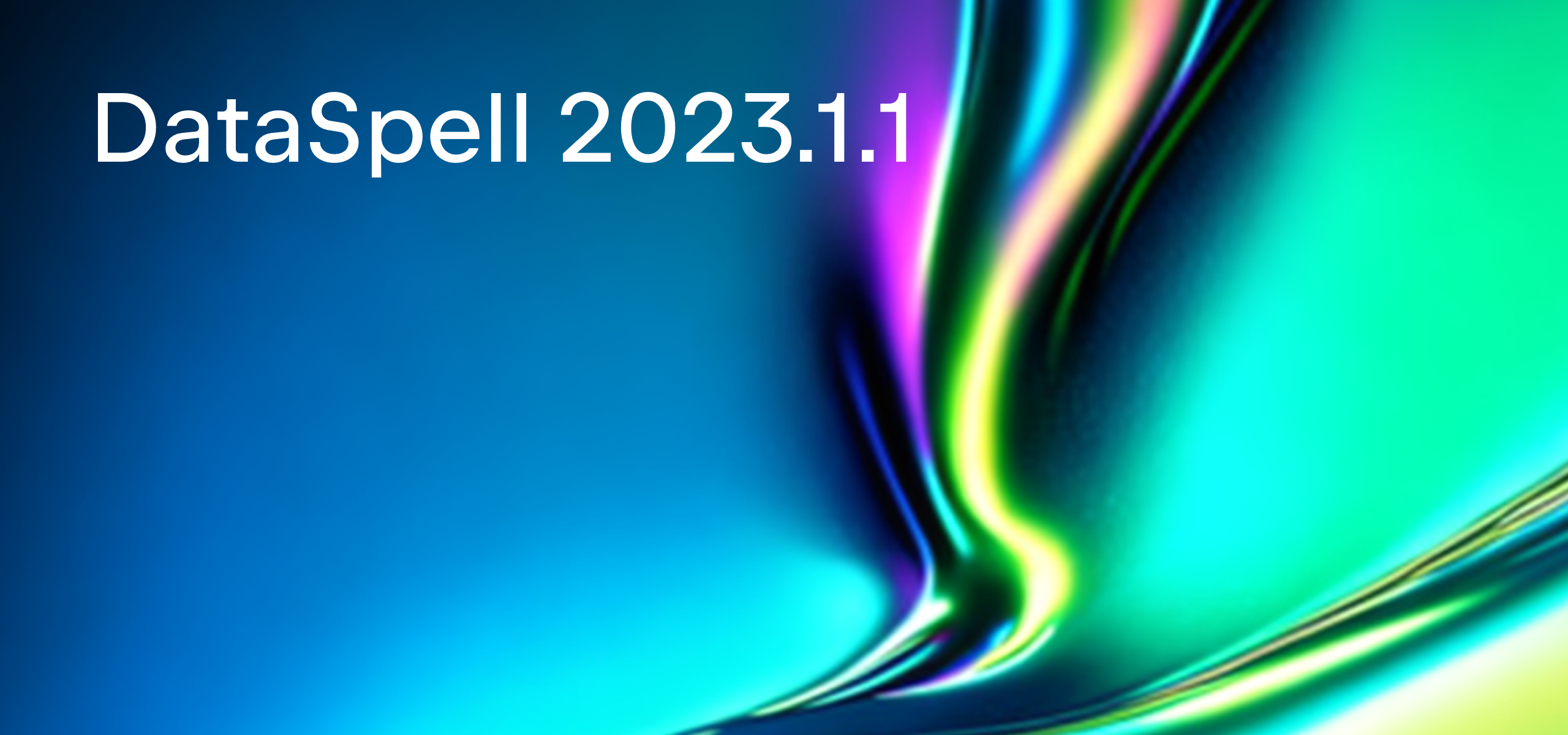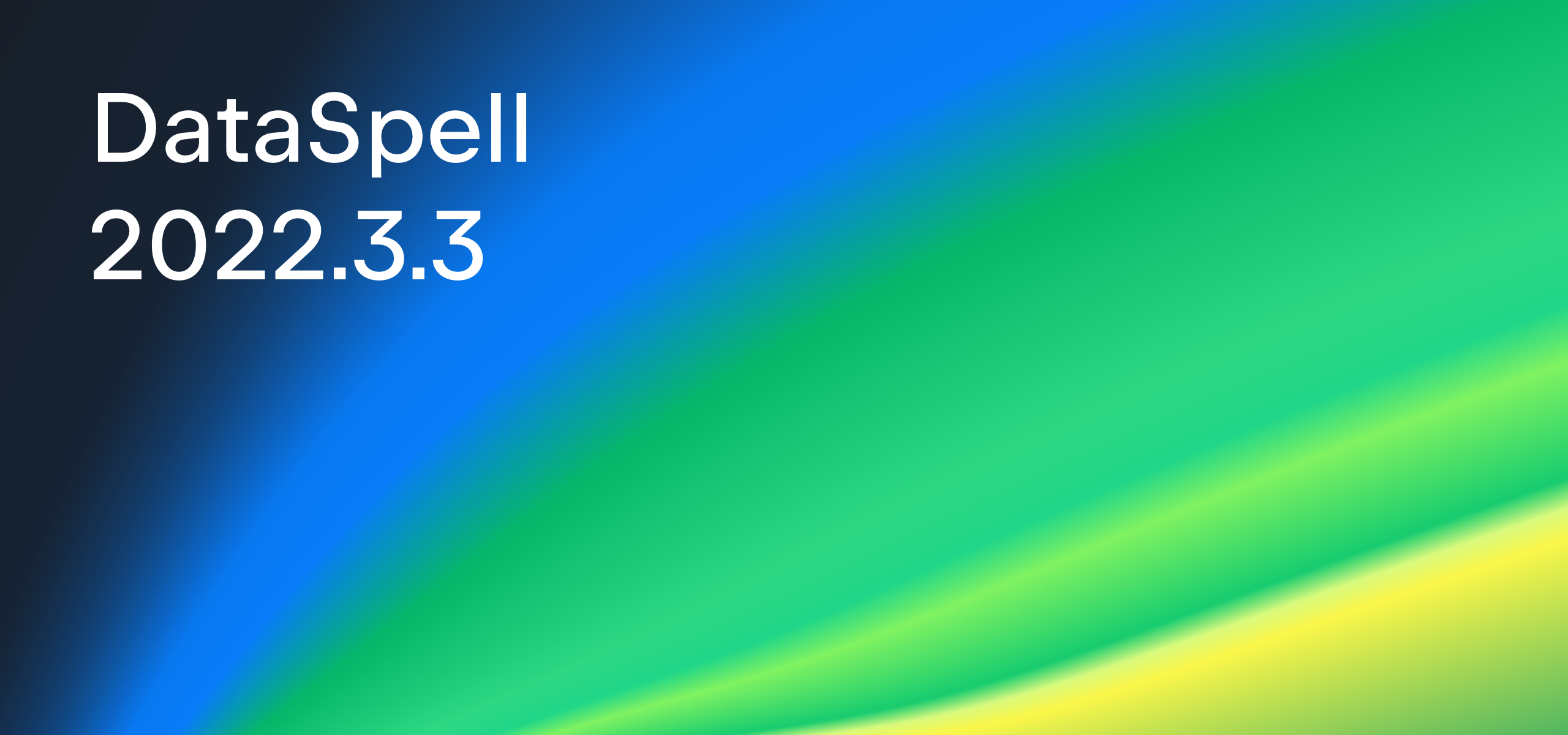DataSpell 2023.2: Polars Support, Faster Table Data Exploration, New UI Improvements
DataSpell 2023.2 introduces Polars DataFrames library support, substantial enhancements in table data exploration, new UI improvements, and much more.
We’re delighted to announce that we’ve started the integration of Polars as a first-class citizen within DataSpell. We understand how vital it is for data professionals to have access to the descriptive statistics of their data. This release makes data exploration easier than ever by displaying descriptive statistics for data. Users have expressed their love for the newly designed DataSpell UI, appreciating its ability to keep them focused on their workflow, the clean design, and its general aesthetic appeal. We’re happy to report that these latest UI improvements enhance productivity and personalization. In addition, significant productivity and convenience enhancements were added to both the Big Data Tools and Database plugins, as well as the ability to configure Jupyter-managed servers and improved synchronization between DataSpell and external applications.
Download the new version of DataSpell from our website, update directly from the IDE or via our free Toolbox App, or use snap packs for Ubuntu.
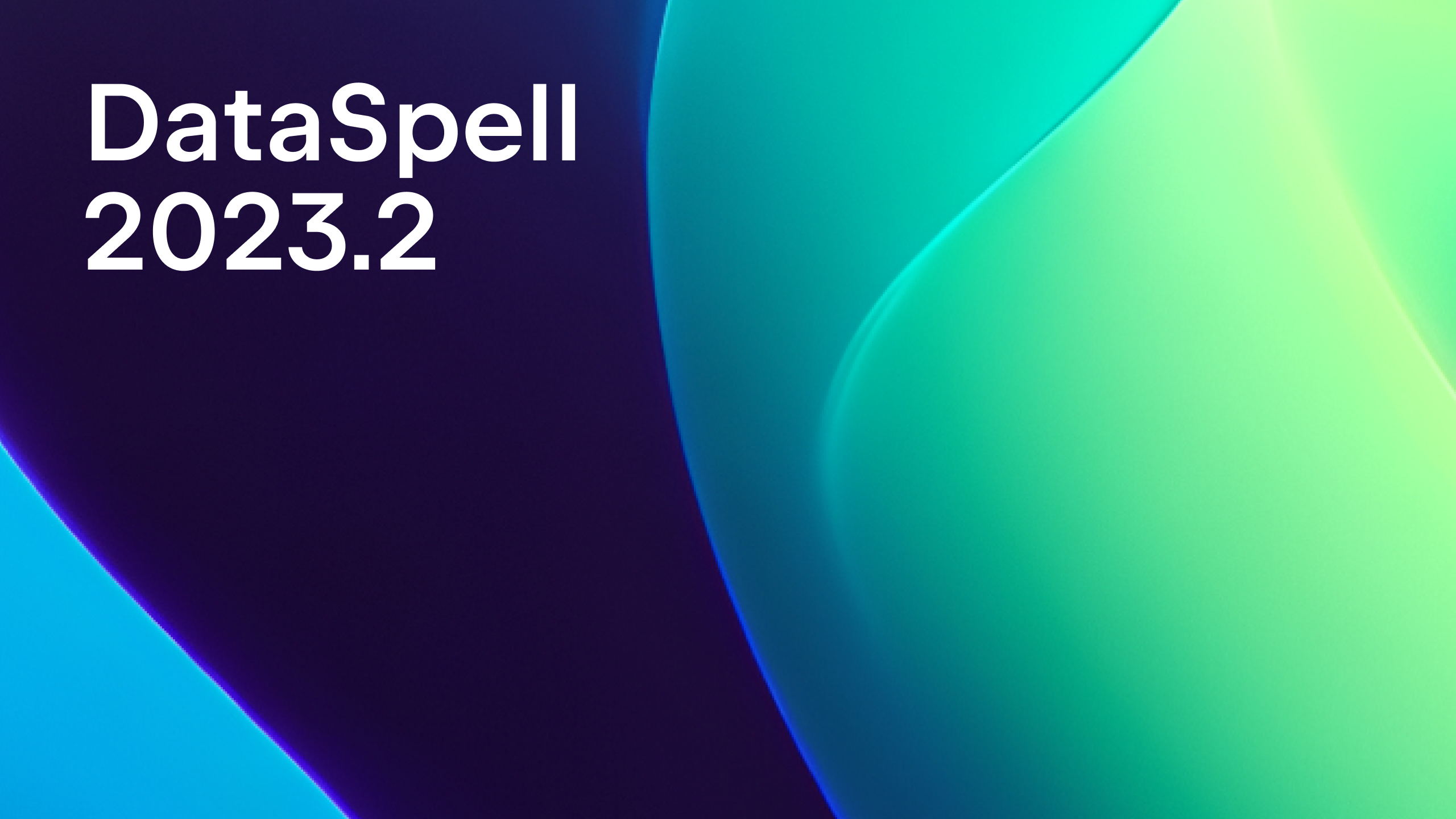
Polars support
Polars has recently gained significant popularity due to its remarkable high-performance capabilities. We’ve taken some giant strides toward making Polars a first-class citizen for DataSpell.
First, DataSpell has introduced interactive tables for Polars DataFrames, enabling effortless sorting, exporting, and viewing of data. These tables are supported both in Jupyter notebooks and Python consoles. Now, you can conveniently access tables using Python and Jupyter debuggers and variable viewers.
Moreover, we’ve also introduced column-name completion support in Polars functions. This feature simplifies your interactions with the library and facilitates data manipulation within DataSpell.
Faster table data exploration
We’ve streamlined the data exploration process, which is crucial and often time-consuming for data professionals. By simply hovering over a column header, you can now effortlessly access valuable information such as value distribution, mean, standard deviation, and missing values. This feature is currently available for pandas and Polars DataFrames.
New UI improvements
Colored project headers in the new UI
In the latest release of DataSpell 2023.2, we’ve introduced colored headers to enhance your navigation experience when working with multiple open projects. Now, you can assign a unique color and icon to each project, making it effortless to distinguish between them.
By default, headers come with predefined colors, but you also have the flexibility to customize them according to your preference. To set a new color for a project, simply right-click on its header and access the context menu. From there, select the Change Toolbar Color option and choose your desired color. If you wish to disable this feature, you can easily do so by deselecting the Use Project Colors in the Toolbar option in the context menu.
These personalized headers simplify project navigation and add a touch of customization to your UI, making your workspace truly tailored to your needs.
Other UI improvements:
- Single-click navigation between project directories.
- Updated window controls on macOS.
- Run widget improvements
For more information about our new UI, please visit the New UI landing page.
Configure Jupyter-managed servers
DataSpell 2023.2 supports configuration for Jupyter-managed servers, providing you with, among other things, the ability to:
- Specify environment variables for the managed server.
- Configure managed servers to launch from any directory, not just the project root.
- Specify additional parameters for Jupyter or the JupyterLab servers.
Improved Jupyter Notebooks Synchronization With External Applications
In this release, we have significantly improved how DataSpell Jupyter notebooks changes are synchronized between DataSpell and external applications such as Git or the browser version of Jupyter. You can now effortlessly switch between DataSpell and external applications, and any changes made in either will be perfectly synchronized.
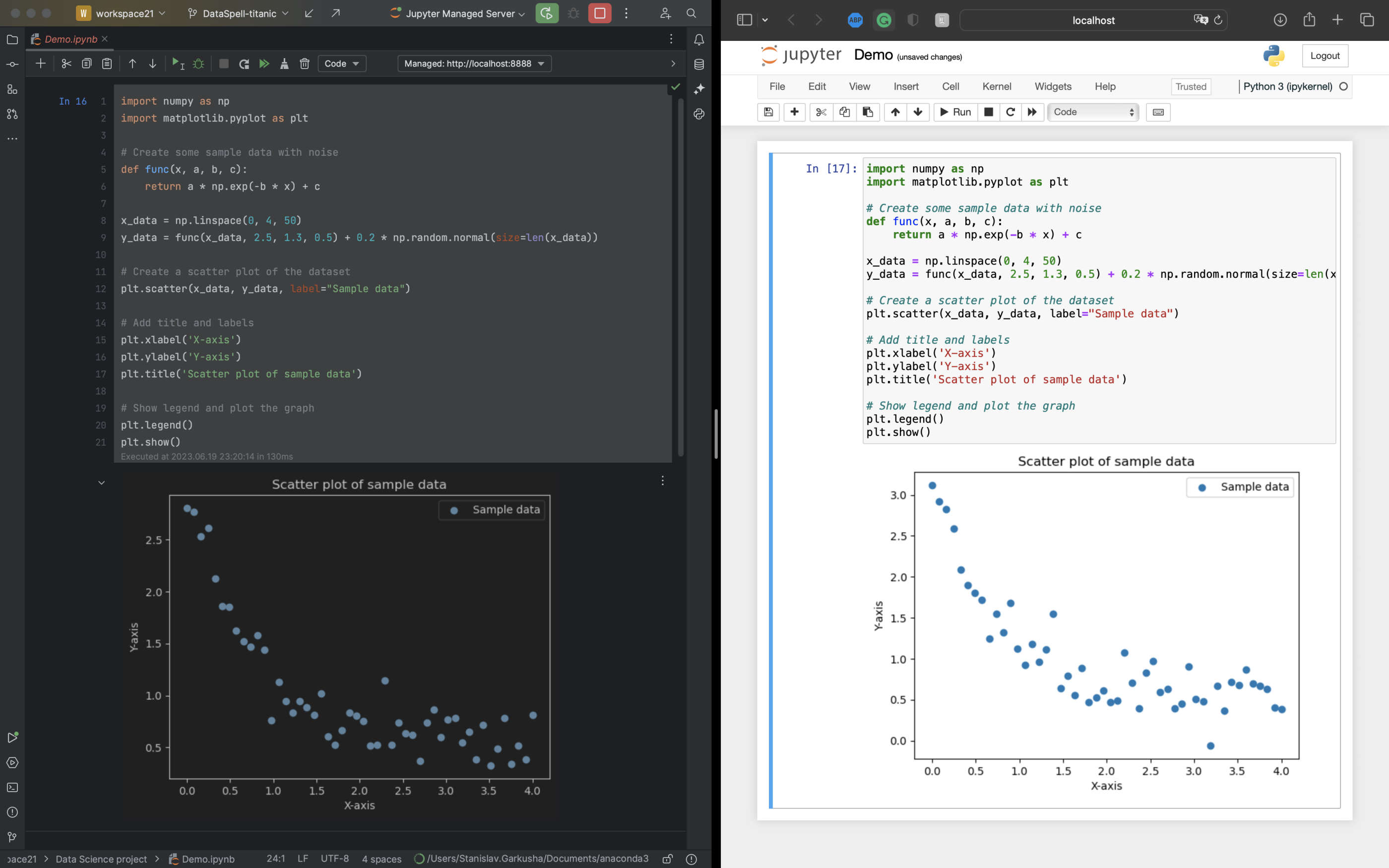
Data Management
Big Data Tools plugin
We have decomposed the Big Data Tools plugin to enhance convenience, enabling you to utilize its components independently. This means six new plugins are now available for DataSpell: Kafka, Spark, Flink, Remote File Systems, Big Data File Viewer, and Zeppelin. If you need all of these plugins, installing the umbrella Big Data Tools plugin is still possible and a convenient way to get them all in a single click.
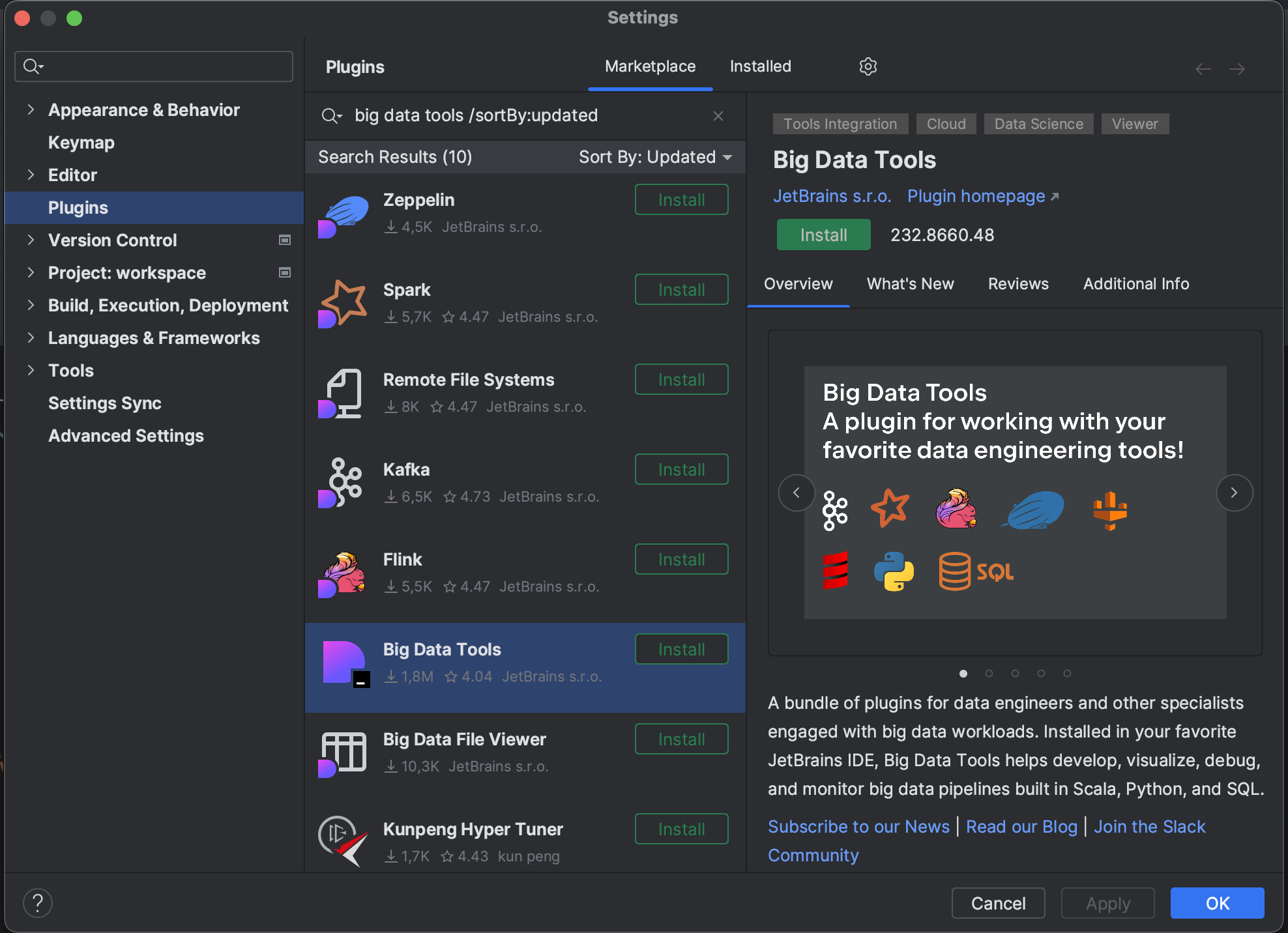
New UI for schema migration dialog
Continuing our efforts to enhance usability, we’ve made significant improvements to the schema migration dialog functionality in this release of DataSpell.
The major change is that objects are now aligned on the same line in both parts of the dialog. This modification simplifies the understanding of which objects will be added, removed, or modified in the target schema, ensuring a clearer and more intuitive experience.

Support for Redis Cluster
With the latest update, you can now establish connections to Redis clusters and enjoy the same comprehensive feature set as you would with standalone Redis.
Data editor time zones
Introducing the new Time Zone setting, allowing you to specify the desired time zone for displaying date time values.
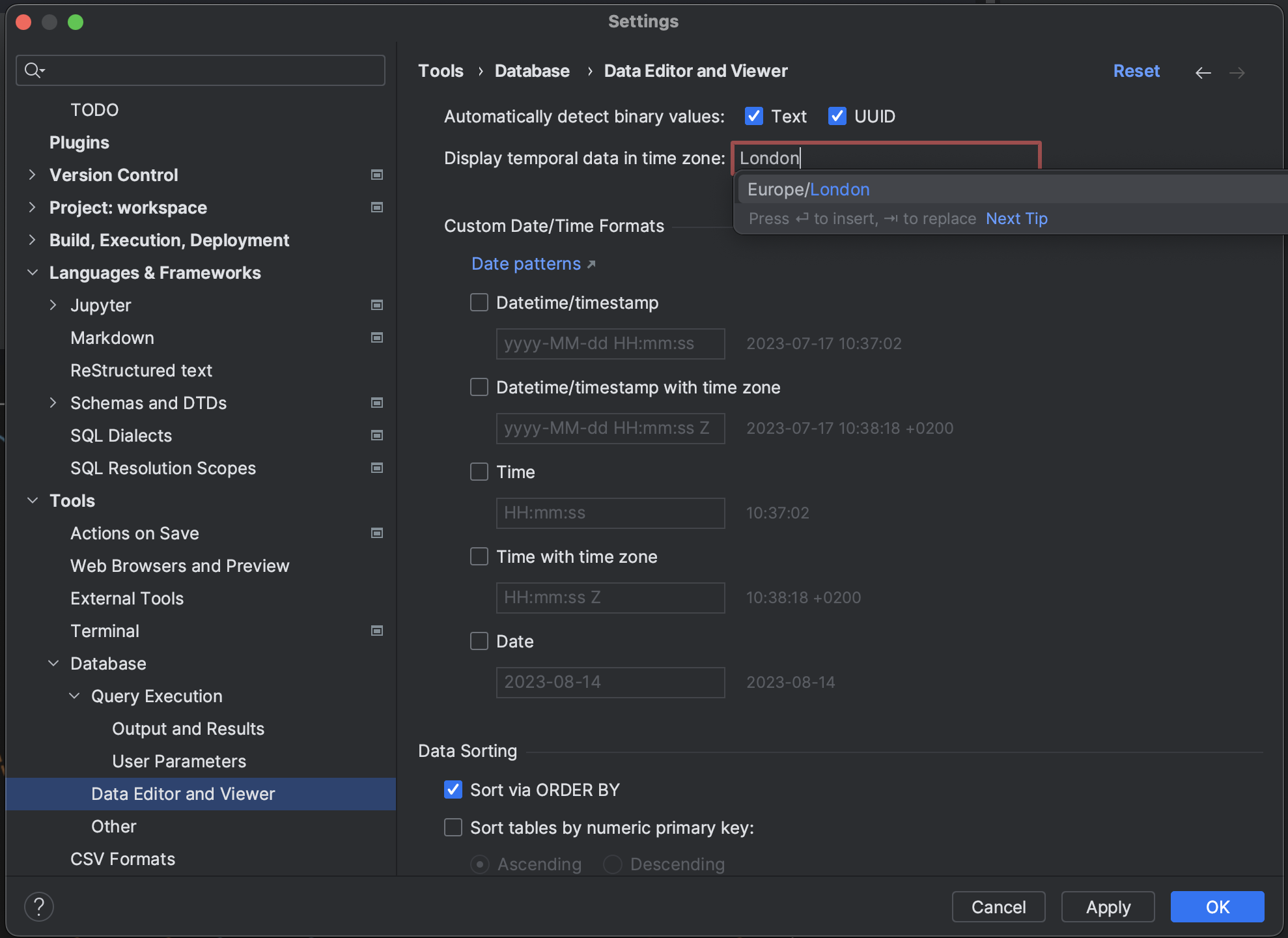
[Redshift] Support for external database/datashare
We’ve introduced enhanced introspection capabilities for shared databases and their contents. Additionally, the datashares on which these databases are created are now also introspected.
You can modify shared databases and data shares using the shortcut Ctrl/Cmd+F6. Furthermore, all related statements are now supported in the SQL editor.

We hope you enjoy the new features! Want to be the first to know about new features and get DataSpell and data analysis tips? Subscribe to our blog and follow us on Twitter! If you encounter a bug or have a feature suggestion, please share it in our issue tracker.
Subscribe to DataSpell Blog updates




